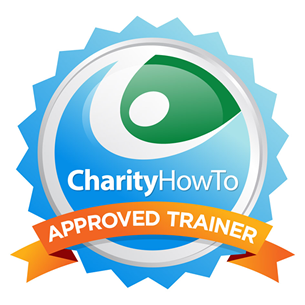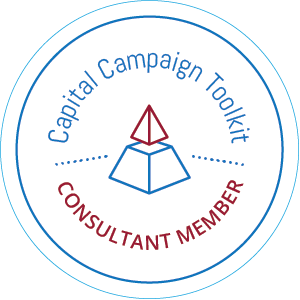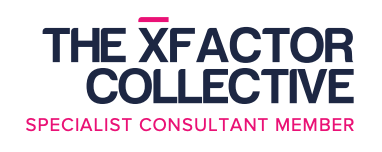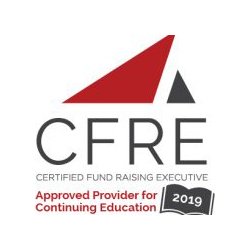Donor retention is an issue. It costs more to acquire a new donor than it does to keep a donor. So, what are we to do?
Recurring giving!
When referring to recurring giving, it is more than just giving monthly. It is about giving on any regular timeline, weekly, monthly, quarterly, bi-annually, etc.
We know that once a donor is a recurring one, they do not tend to stop their giving. With one-time gifts, the emphasis is always on constant re-engaging and asking.
Quite simply, even in the for-profit world, subscription purchasing has become the norm. For instance, take a look at Amazon, which allows you to buy products on a recurring “subscription” based plan.
In Australia, where I also have an office, the fundraising community calls “recurring” giving “Regular” to signify its nature and its importance. One-time gifts are referred to as “One Off’s”.
Whether you are a small not-for-profit or a large one, you should be thinking about a Regular or Recurring Giving Conversion Strategy.
Below are the steps I recommend to my clients when beginning to plan for “Regular” Giving Conversions. Follow these, and your recurring giving strategy will be up and running in no time!
Step #1: Develop a strong Case for Support
- People need to know why they should give to you, why a recurring donation helps, and what difference their gift will make.
Step #2: Consider alterations to online presence
- Consider one donate button with regular giving as the default option
- Place regular giving promo on the homepage of the website
- Create a monthly giving landing page
- Create a pop-up on your home page or donation check-out before they check out
Step #3: Determine Regular Giving Ask Amount
- Determine the regular gift ask amount by determining your average gift amount from one of your last appeals and divide that average gift amount by 3. This amount is what you should be asking for as an entry-level monthly donation (a third of your typical appeal donation)
- For example, if you know your average gift is $25 when you send out an appeal, then $25/3 = $8.33. A typical monthly donation across the industry is approximately $25.
Step #4: Determine when to ask
- Recruit in January. Kick the new year off with a short campaign asking people to make a monthly commitment to your nonprofit.
- Ask in appeals. Anytime throughout the year that you’re sending an appeal, whether through the mail, make regular giving an option on your appeals. A simple checkbox that says “Make this gift a regular gift” or email.
Step #5: Determine who to ask
- First, start with current Board members and volunteers.
- Target specific one-time donors. Look through your donor records and pull out anyone who has given three or more times in the past year. These donors are already on their way to becoming monthly donors, and with the right ask, you might be able to motivate them to say “yes.”
- Ask program beneficiaries. Invite the people who benefit from organisation’s work to make a regular gift.
- Upgrade current regular donors. This strategy isn’t a source of new donors, but it will feel like getting new donors. Ask your current donors to consider increasing the amount they give.
- Reactivate lapsed monthly givers.
Step #6: Determine how to ask
- Begin by mailing a direct mail package focused entirely on getting one-time donors to become monthly donors. (Expect a 1% return rate). Consider a secondary mailing or series as a follow-up.
- After the mailing begins, phone solicitation is aimed at converting one-time donors to regular donors. Those that decline to join ask to consider a single donation. The telephone has a much higher conversion rate than mail.
- Consider targeting current regular donors, call and update them on work and ask for an upgrade to their current monthly. As many as two in five contacted by phone will upgrade their regular pledge, the amount of increase can often be relatively high. Use a higher-level giving club to inspire current regular givers to upgrade.
- Conversely, you may also want to test phoning first, and mailing second (to those you don’t reach by phone) is a better strategy.
- Target lapsed regular donors whose contributions ended more than a year with a telephone call. The reactivation rate can be close to 50%.
- By using the phone to get regular donations, contributions are almost always confirmed while donors are still on the phone. The donor reads the caller a credit card number or the transit and account numbers that appear at the bottom of his/her cheques. With the permission of the donor, the monthly donation is then processed, and donors are sent a confirmation that thanks them and offers them a chance to change their minds.
Step #7: Determine how to acknowledge
- Thank you by phone and send the welcome packet immediately
- Segment regular givers into their communication stream with newsletters/updates
- Thanking Regular Donors monthly:
- One month, call them to thank them and give them an update.
- The following month, send them a short video showing your nonprofit in action.
- The following month, send a hand-written note.
- The following month, send a thank you video.
- The following month, try something else or repeat the cycle.
- Yearly, send out tax receipt.
Step #8: Stay on top of credit card declines and expirations.
- Review regular donations every month to see which ones didn’t go through and call them to get updated credit card info.
- Allow donors to cancel/ PAUSE/ up or downgrade their monthly gift online.
Consider grabbing a copy of my Best Practices In Social Media that include the different types of posts you should be using and a suggested weekly calendar.
Development Consulting Solutions has a team of experts who can meet your needs by serving as your grant reviewer, grants researcher, proposal template developer, and ongoing grant writer. Check out our list of grant writing services here.
Contact us today to discuss your grant writing needs.
Join my new nonprofit “community” who are surviving and thriving! Click HERE to join my private Facebook group: Nonprofit Survive and Thrive Mastermind and receive support and inspiration to drive your results.
Get my {FREE} Build a Better Board Ebook…
Many Board of Directors still operates at the management “Day to Day” operational level not realizing that, in fact, they have a far more significant and greater responsibility to stewarding the health of the organization.
In this FREE e-book, learn:
- What is good governance and what is not
- How to build your best Board now
- How to move your organization from management to governance
- and, how to ensure the future stability of your organization!
https://developmentconsultingsolutions.ac-page.com/nonprofitgovernance
For a free, 30-minute consultation, or to learn more about our “Survive and Thrive” professional coaching services, visit us here at www.developmentconsultingsolutions.com/coaching or book your fundraising coaching session at http://calendly.com/developmentconsultingsolutions/30min.
Photo by freestocks on Unsplash










Leave a Reply
Want to join the discussion?Feel free to contribute!